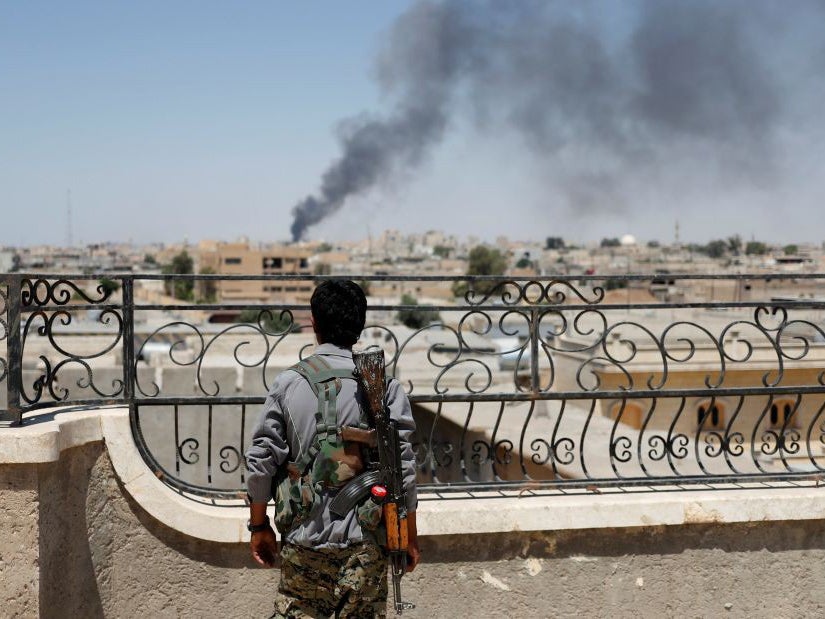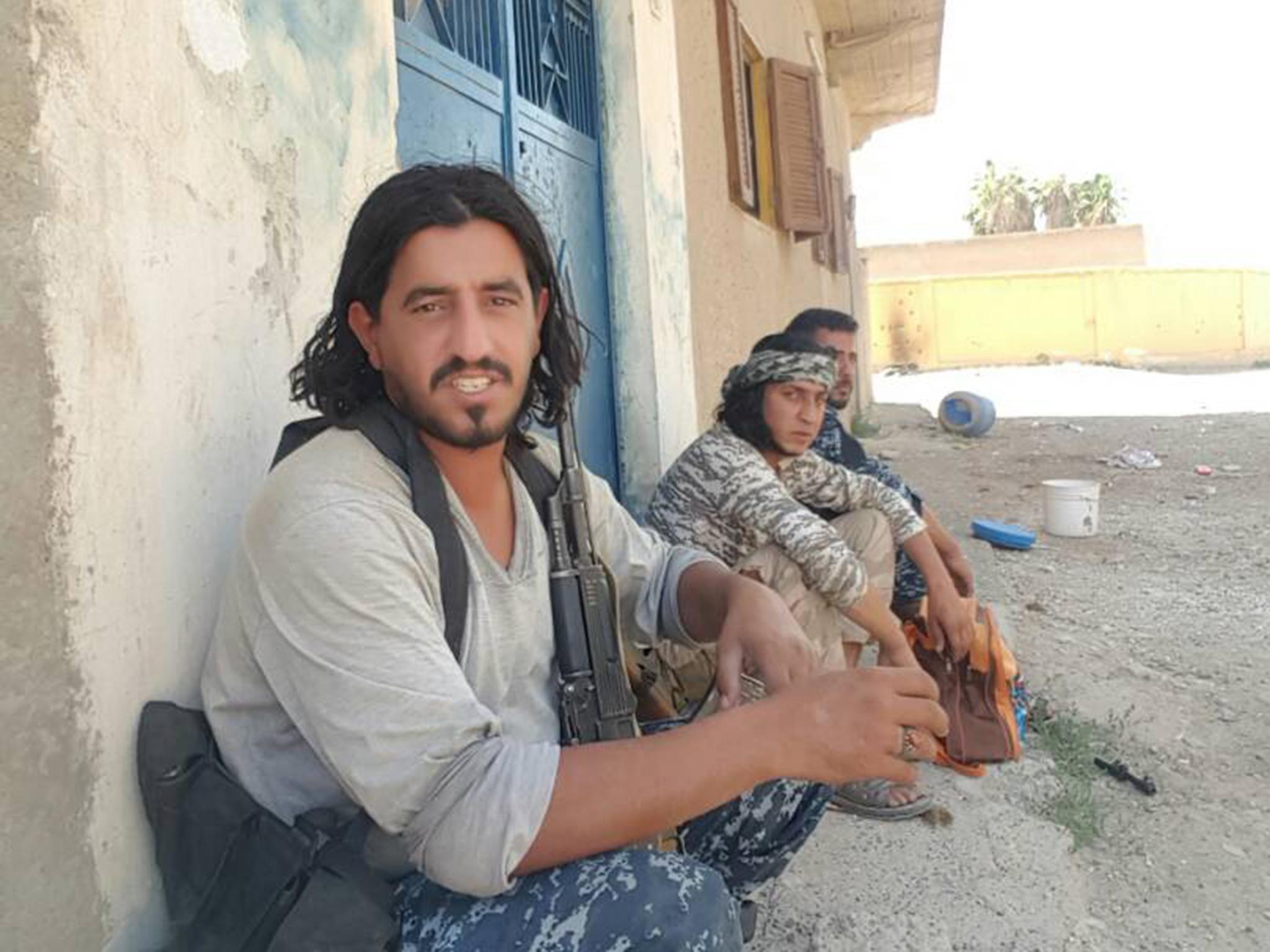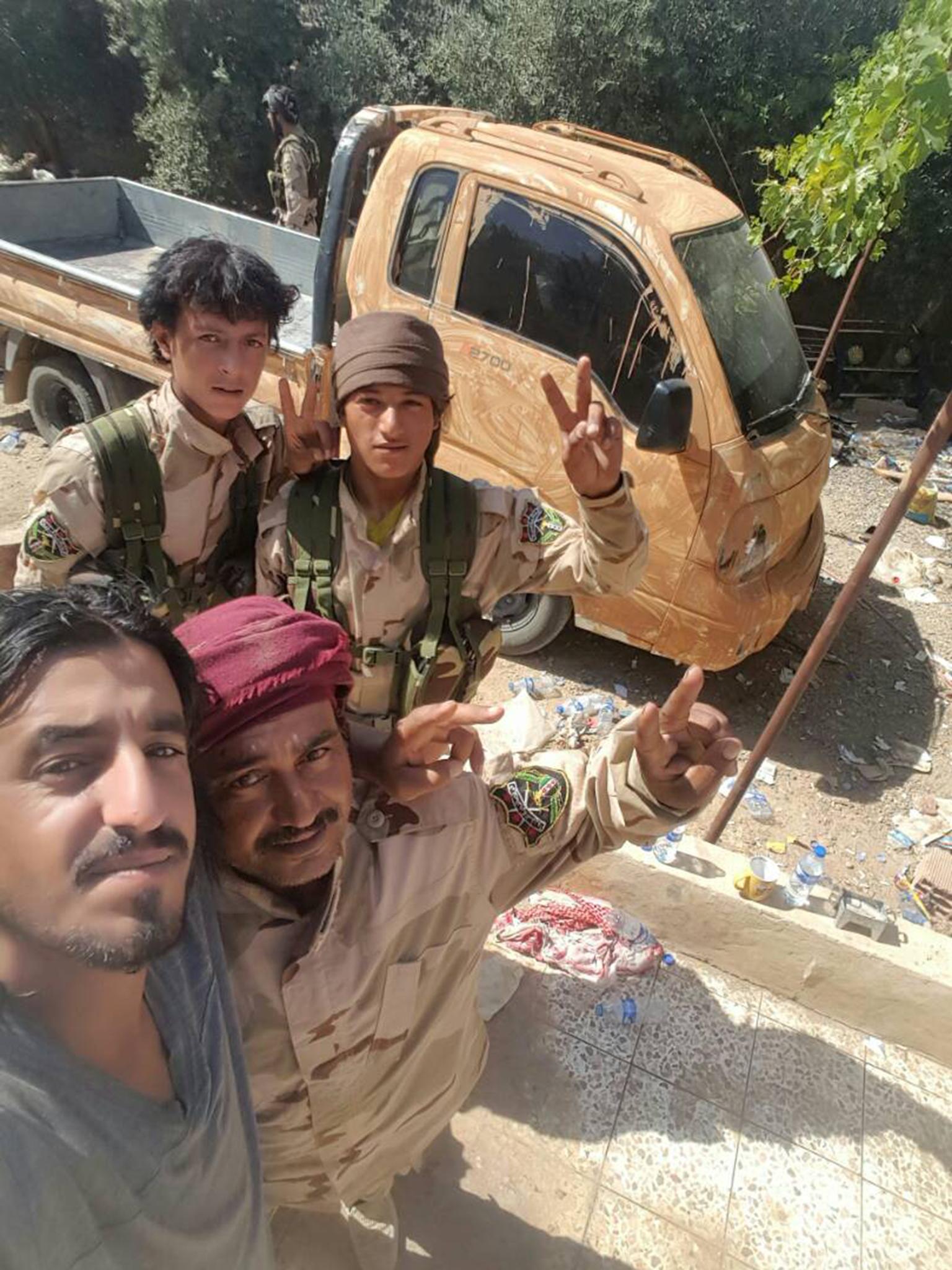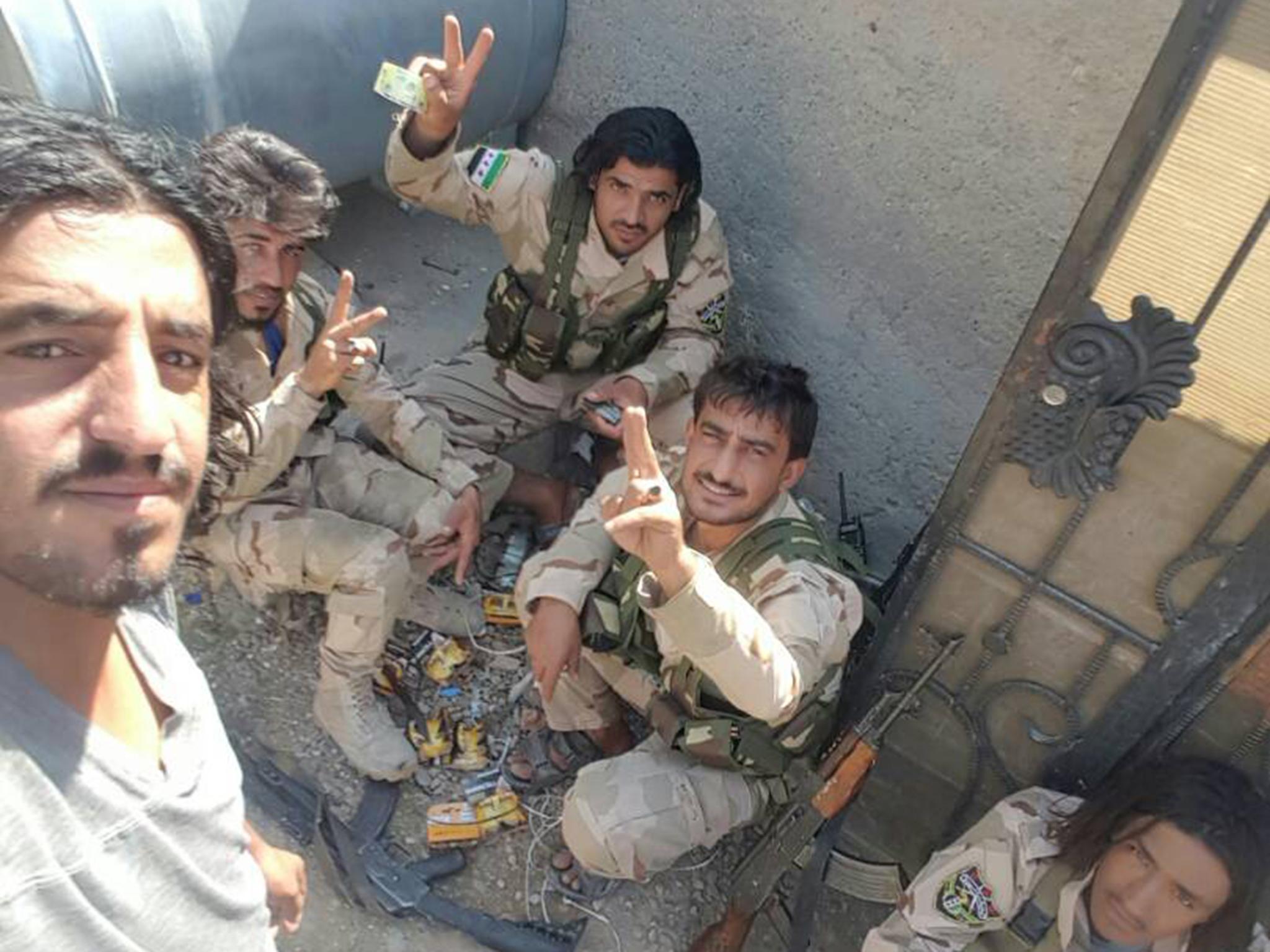Battle for Raqqa: Fighters begin offensive to push Isis out of Old City
In the second part of a series from Iraq, anti-Isis fighters tell Patrick Cockburn the terror group is massacring any civilian that tries to help oust them

Your support helps us to tell the story
From reproductive rights to climate change to Big Tech, The Independent is on the ground when the story is developing. Whether it's investigating the financials of Elon Musk's pro-Trump PAC or producing our latest documentary, 'The A Word', which shines a light on the American women fighting for reproductive rights, we know how important it is to parse out the facts from the messaging.
At such a critical moment in US history, we need reporters on the ground. Your donation allows us to keep sending journalists to speak to both sides of the story.
The Independent is trusted by Americans across the entire political spectrum. And unlike many other quality news outlets, we choose not to lock Americans out of our reporting and analysis with paywalls. We believe quality journalism should be available to everyone, paid for by those who can afford it.
Your support makes all the difference.In the early dawn of 5 July, a 200-strong force of anti-Isis fighters launched a surprise attack on the Old City of Raqqa, which is the last big urban centre held by Isis anywhere in Syria and Iraq. Recruited mostly from survivors of a tribe that Isis massacred three years ago, the five-man assault teams, into which the attackers were divided, at first made quick progress and reached a well-known local mosque in the Old City called Othman bin Affan.
But Isis is still a formidable force, using expert snipers, suicide bombers and great numbers of improvised explosive devices (IEDs) to inflict casualties. Abu Imad al-Sheity, the commander of the anti-Isis group, told The Independent in an interview by phone from the front line, that “the Daesh [Isis] militants learned that the local civilians were telling us the position of their snipers. They targeted them and killed dozens. It was a horrible massacre.” The UN says that there are between 50,000 and 100,000 civilians still left in Raqqa.
Sheity says his fighters “retreated to the Baghdad Gate at the entrance to Raqqa’s Old City”. He adds the pull-back was to protect those civilians who were still alive, but the hard-fought battles this week are a sign that Isis is still capable of defending this isolated city on the north bank of the Euphrates river which is now besieged by Kurdish-led (though sometimes ethnically Arab) units which are backed by the immense firepower of the US Air Force and its allies. Since the Syrian Democratic Forces (SDF) offensive to take the city started on 6 June, the Syrian Observatory for Human Rights says that 224 civilians have been killed by US-led airstrikes.

The group that tried to fight its way into Raqqa this week is known as the Syrian Elite Forces, which belong to the Syrian Free Army umbrella group. But Sheity says that he and most of his men come from the al-Sheitaat tribe that lives mainly in Deir Ezzor province further south along the Euphrates. In 2014, the Sheitaat resisted the rising power of Isis and were massacred with at least 900 of its members shot, crucified, beheaded, thrown down wells and buried in mass graves that are still being unearthed. It was the worst single atrocity carried out by Isis in the war in Syria.
Sheity, a young man with long dark hair, says that the losses of his tribe were even greater: “We lost about 1,700 tribesmen, including those who disappeared as well as those killed.” Isis, then at the height of its power, wanted to show that it would mercilessly punish any individual or tribe which resisted the newly established Caliphate. The places where the Sheitaat live is one of the diminishing number of enclaves where here Isis is still in control.
Raqqa is now under heavy attack by the SDF, which are led by Syrian Kurdish troops, but also contain Arabs who are often from local tribes. This is politically important because Raqqa and this part of the Euphrates Valley are populated by Arabs who would resent Kurdish occupation. Though the Syrian Kurdish forces, the YPG, are committed and experienced soldiers, what makes it impossible for Isis to resist in the long term is the massive US air strikes.

SDF fighters say that Isis defensive tactics in Raqqa are different from those in earlier battles where there was greater reliance on suicide bombers and car bombs. Probably in order to avoid being targeted from the air, Isis in Raqqa is relying more on a vast network of tunnels, often dug by civilians and by prisoners sentenced to forced labour. Isis is making more use of small drones to drop explosives, which unnerves attacking Arab and Kurdish troops who are used to their side enjoying complete control of the air.
Raqqa, with a population of 300,000 is much smaller than Mosul which had some 1.4 million inhabitants before Iraqi forces started their attack on it almost nine months ago on 17 October 2016. Sheity, the commander of the Syrian Elite Forces, says that in some parts of the city Isis had evacuated people before the fighting began.
When Isis fighters later withdraw, they left the area behind them heavily seeded with mines. “Daesh planted mines even in the shops and bins on the corners of the streets and buildings,” says commander Sheity. “They used a lot of drones dropping explosives.” He thought that the clashes over the last month were the most intense since the operation against Raqqa started last year. More than anything else, Sheity says it is the Isis snipers that hold up his advance, quickly changing their positions and moving through tunnels or holes in the walls of houses.

As in Mosul, where Isis blew up the al-Nori mosque last month, Isis in Raqqa has destroyed shrines to the companions of the Prophet Mohammed. Advancing from the east, commander Sheity and his men found that every trace of the tombs was gone.
At the height of their power in Raqqa, Isis had a well organised administration staffed by well-trained experts. In a phone interview with The Independent, Jasim, 25, a graduate of an institute of accounting in Raqqa, described how he had worked for two years for Isis in Mosul and Raqqa. He and his two teenage brothers (aged 14 and 16) had taken advantage of an SDF amnesty and surrendered earlier this year. He joined the force attacking Raqqa two weeks ago.
Jasim says that all the managers in the Isis accounting office where he worked were Iraqi, confirming that Isis was always essentially an Iraqi movement. “We Syrians were second-class employees or servants,” he says. He was paid $300 a month compared to about $400 for a fighter, though both got a free monthly supply of fuel, flour, rice and some kinds of food basket. He finally fled in May this year after several abortive attempts. “I managed to flee through a smuggler, an Iraqi who was a fighter with Isis,” says Jasim. “It cost me and my family members about $5,000.”
Join our commenting forum
Join thought-provoking conversations, follow other Independent readers and see their replies
Comments